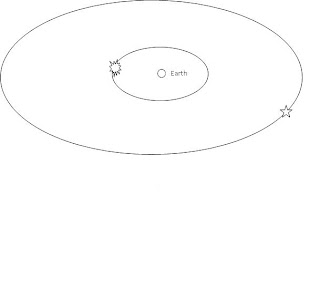Aether motion testing
OWLS vs. TWLS One Way Light Speed vs. Two Way Light Speed
We use the model of aetherists 150 years ago…. A boat (photon) moving in a river(moving aether) or a plane in air currents simulates the interaction of photons and aether moving at speed v.
A boat (# 2 above) can move at speed c in still water, so it moves downstream at c + v and upstream at c – v.
Measurement of the roundtrip speed along A-C-A (TWLS) and assuming that only the speed can be measured (as in the M&MX) will not detect the aether speed v, since (c + v)/2 + (c – v)/2 = c . Only an OWLS test will detect v.
Conclusion: All TWLS tests of light speed in parallel aether flows are worthless and claims of isotropy of c with high precision lasers are bogus.
Boat #1 heads straight across. The diagram as drawn is incorrect, as the boat would be deflected to the right(downstream) while crossing. The diagram does show what to expect if the effect of the moving medium(water/aether) is ignored.
Above diagram at top shows how to head upstream in the water/aether current to move straight across at a reduced speed of c(1-v2/c2)1/2 , using the Pythagorean theorem.
The bottom shows the correct motion of #2 ; it predicts an observed stellar aberration angle as arc sin( v/c). The value of v depends on the westward daily aether motion, the annual N-S motion of the ecliptic aether , and the elliptic motion of the Sun around the Earth and the stars around the Sun. See below
The speed of photons perpendicular to the aether current is (c2 –v2)1/2 = c (1 –v2/c2)1/2.
It’s this change in c of order (v2/c2) - due to the aether cross-current – that Michelson and Morely sought to measure.
The aberration of light in a moving medium was demonstrated by Jones in 1971 R V Jones 1971 J. Phys. A: Gen. Phys. 4 L1
The transverse 'Fresnel ether drag' experienced when light passes through a refracting medium moving at right angles to the original direction of the light, and confirmed indirectly by Airy's water- filled telescope experiment, has been observed directly. A change in rotation speed from 600 to 1800 rpm of a glass disc produced a transverse displacement of about 1.5*10-6 mm in a light beam passing twice through the disc. This agrees with the Fresnel formula to within the 10% accuracy of the experiment.
Longitudinal drag (above left) occurs when light passes parallel ( c+v) or antiparallel(c-v).
Transverse drag ( above right) entrains the photons sideways at an angle = arc sin(v/c) .
The dashed line is the light path through the glass at rest into detector D . The solid line is the path with rotation omega .
This is the angular shift Jones saw when the glass disk’s speed was increased by 1200 rpm.
Conclusion: Stellar aberration is caused by the dragging of light by the transverse motion of aether rotation around the Earth.







